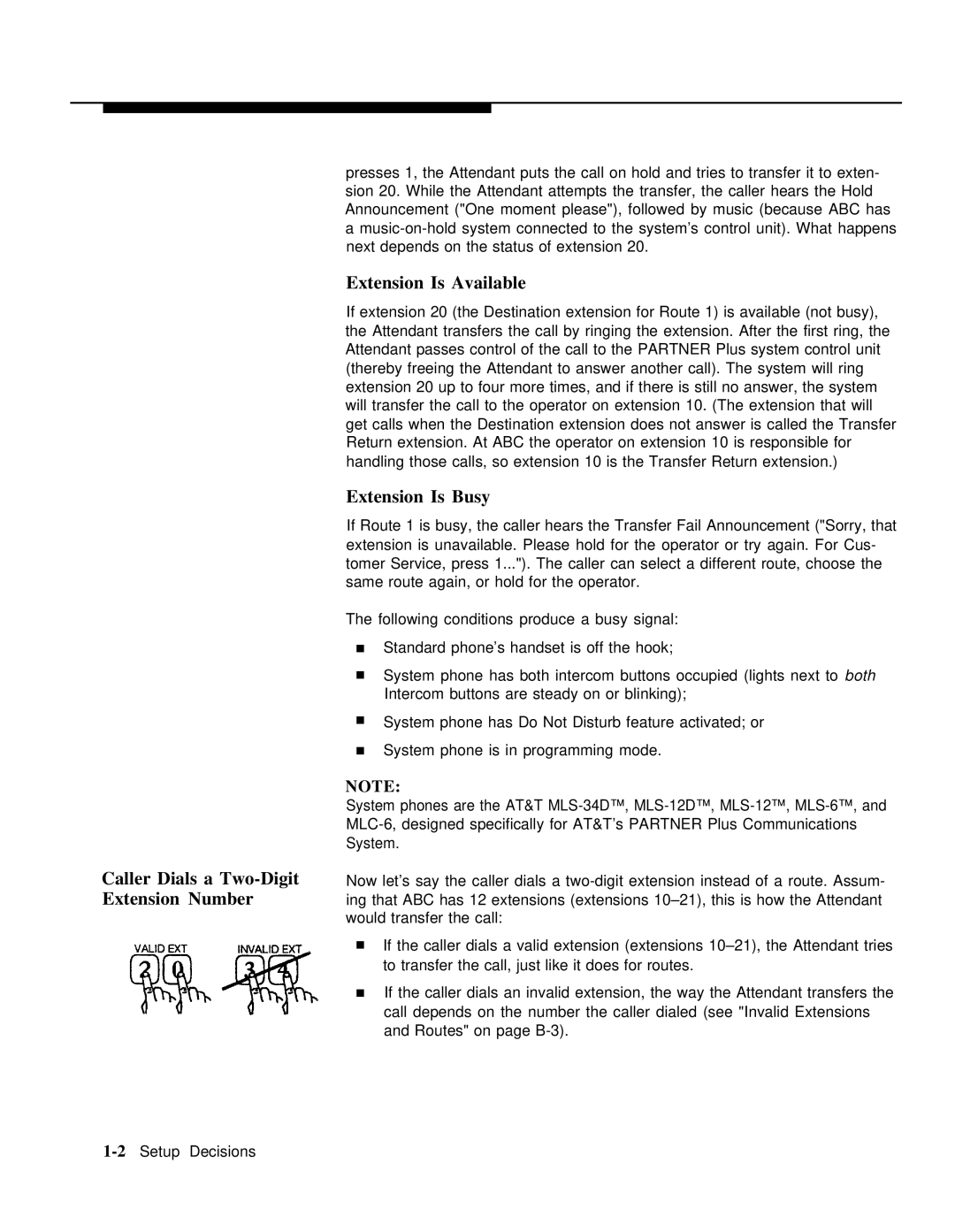
Caller Dials a Two-Digit Extension Number
presses 1, the Attendant puts the call on hold and tries to transfer it to exten- sion 20. While the Attendant attempts the transfer, the caller hears the Hold Announcement ("One moment please"), followed by music (because ABC has
a
Extension Is Available
If extension 20 (the Destination extension for Route 1) is available (not busy), the Attendant transfers the call by ringing the extension. After the first ring, the Attendant passes control of the call to the PARTNER Plus system control unit (thereby freeing the Attendant to answer another call). The system will ring extension 20 up to four more times, and if there is still no answer, the system will transfer the call to the operator on extension 10. (The extension that will get calls when the Destination extension does not answer is called the Transfer Return extension. At ABC the operator on extension 10 is responsible for handling those calls, so extension 10 is the Transfer Return extension.)
Extension Is Busy
If Route 1 is busy, the caller hears the Transfer Fail Announcement ("Sorry, that extension is unavailable. Please hold for the operator or try again. For Cus- tomer Service, press 1..."). The caller can select a different route, choose the same route again, or hold for the operator.
The following conditions produce a busy signal:
■Standard phone’s handset is off the hook;
■System phone has both intercom buttons occupied (lights next to both Intercom buttons are steady on or blinking);
■System phone has Do Not Disturb feature activated; or
■System phone is in programming mode.
NOTE:
System phones are the AT&T
Now let’s say the caller dials a
■If the caller dials a valid extension (extensions
■If the caller dials an invalid extension, the way the Attendant transfers the call depends on the number the caller dialed (see "Invalid Extensions and Routes" on page
